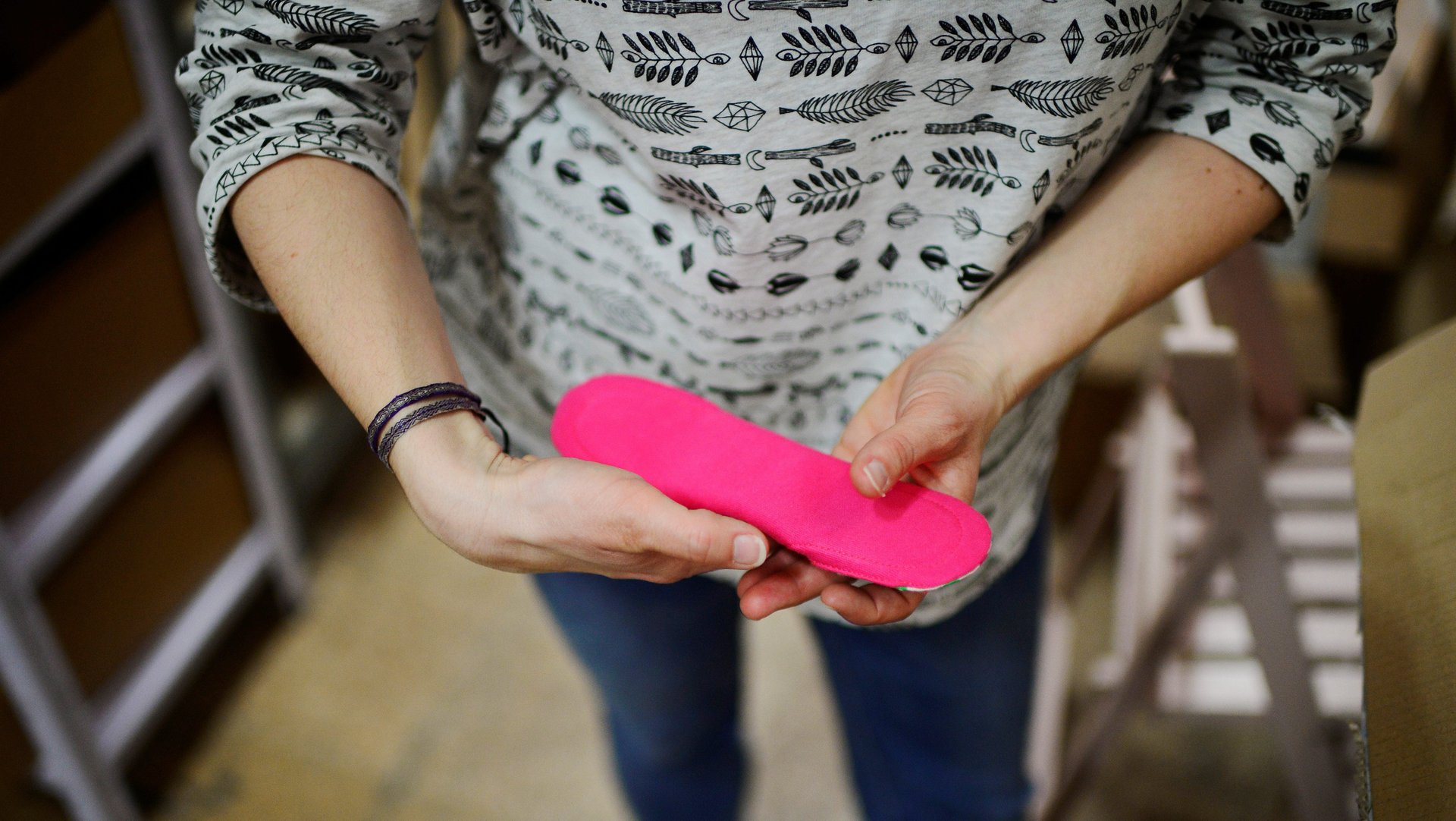Here’s one thing Indian families can do to end period poverty
Nearly 80% of adolescent Indian girls are aware of sanitary napkins, but only 30% have access to them.


Nearly 80% of adolescent Indian girls are aware of sanitary napkins, but only 30% have access to them.
Until two months ago, my two domestic helps—thank you for my clean home, happy baby, and my sanity—fell in this category.
The 45-year-old nanny from West Bengal and the 35-year-old part-timer from Uttar Pradesh have been working for me for months. They are my only daily visitors, and we often sit together sipping tea and chatting about issues ranging from Big Bazaar sales and unruly husbands. However, menstruation never came up. While the topic is slowly entering conversations in India thanks to movies like Padman, it’s still largely taboo.
That was until a couple of months ago when a BigBasket delivery arrived with a big bright pack of sanitary pads. Aghast at a pack of pads resting with other groceries on the kitchen shelf, the duo swiftly picked up everything around it and put them in place, almost as if the sanitary napkins were invisible to them.
A little prodding revealed that neither of these women—who have never once asked for leave or appeared in stress during their periods—had ever used a sanitary napkin.
I wasn’t shocked, but was heartbroken by this “period poverty” so close to home.
Since then, along with their monthly salaries, I have given my helps a pack of sanitary napkins each. (I wrap them in newspapers to save them any embarrassment, which was their primary concern when I first suggested the idea. The next big question was how will they use it and what were the “wings” for, which I demonstrated on an underwear amidst giggles.)
The cost of a pad
There are around 4.2 million domestic workers in India, according to official estimates, while unofficial ones peg them at over 50 million. And over 75% of them are women. On average, domestics in the country earn a meagre Rs6,000 ($86) a month (pdf), as compared to up to Rs30,000 in Hong Kong or Singapore.
Thus, sanitary napkins, which cost an average Rs6 apiece in urban India, are an expensive affair for them.
Yet, for someone like me, this price is not a big pinch. Buying two packets of pads for my maids costs me less than Rs300 a month—what a drink costs on average in Indian cities at reasonably upmarket watering holes.
The impact is outsized, though.
Picture this: Over 80% of women in India use old newspapers, rags, and sawdust instead of sanitary pads. And 70% of them are at risk of severe infection because of this.
In addition, one in 53 Indian women will be diagnosed with cervical cancer in her lifetime, compared with one in 135 in the UK.
One day, I hope to move my two helps to menstrual cups, which are far more cost efficient but could be a tad more intrusive for them at this stage. For now, it’s baby steps.